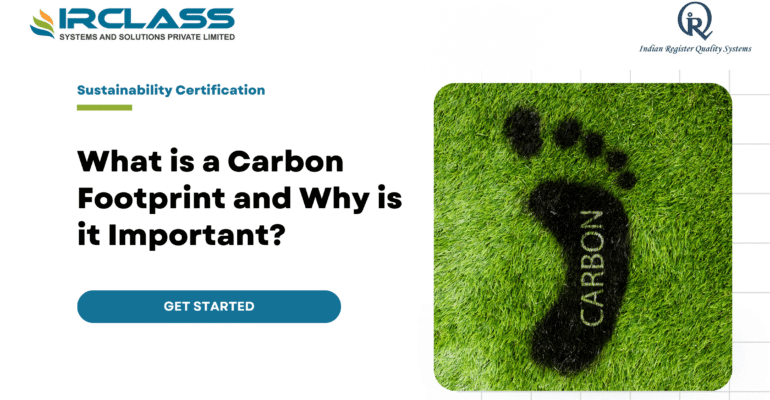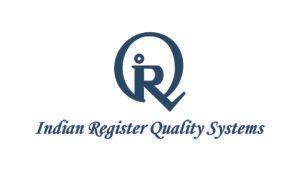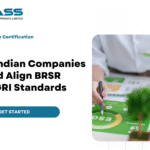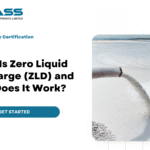What Is Carbon Footprint Verification & Why It’s Critical for Your ESG Goals
June 20, 2025 2025-06-23 13:05What Is Carbon Footprint Verification & Why It’s Critical for Your ESG Goals

What Is Carbon Footprint Verification & Why It’s Critical for Your ESG Goals
Carbon footprint is not just a number. It’s a signal. It tells the world how your business interacts with the environment. And as ESG becomes a core part of how investors, customers, and regulators judge companies, that signal needs to be clear and credible.
Carbon footprint verification is the process of checking that your emissions data is accurate, complete, and reliable. It’s how you show that your reporting is real, not just good intentions. Without it, your ESG strategy is just a story. With it, you’ve got proof.
Why Carbon Footprint Matters in ESG
ESG stands for Environmental, Social, and Governance. The “E” is often the hardest to measure—but also the most urgent. From climate regulations to investor pressure, environmental performance is under the spotlight. Carbon emissions are at the center of that conversation.
If you can’t measure your carbon footprint, you can’t reduce it. And if you can’t prove what you’ve measured, no one will take it seriously. That’s where verification comes in.
It’s Not Just About Saving the Planet—It’s About Staying in Business
Governments are introducing stricter climate rules. Investors are screening for climate risk. Big corporations are auditing their supply chains for emissions. If you can’t show your numbers—or worse, if they’re wrong—you lose out.
Carbon footprint verification helps you stay compliant, avoid greenwashing claims, and build trust. It’s not just good for the planet. It’s smart business.
What Verification Actually Does
Verification is not an internal review. It’s not based on assumptions. It’s a third-party check. Auditors look at your data, your process, and your calculations. They test it against international standards like ISO 14064 or the GHG Protocol.
They don’t just ask “did you do it?” They ask “did you do it right?”
Once verified, your carbon data becomes credible. You can use it in ESG reports, investor updates, sustainability claims, and supplier assessments.
Why Verification Adds Real Value
Anyone can publish an ESG report. But not all reports are created equal. Verified carbon data gives you a competitive edge. It shows stakeholders that you take sustainability seriously—and that your numbers are backed by real checks.
It also helps you spot problems. During verification, issues often surface that might have been missed: incorrect assumptions, missing data, and wrong conversion factors. Fixing them early means better decisions and lower risk.
Carbon Footprint Verification Supports Better Strategy
When you know your real impact, you can make real plans. Verified data helps you set science-based targets. It lets you track progress over time. It helps you compare sites, teams, and suppliers. And it helps you talk about climate action with confidence.
This is about more than optics. It’s about building a strategy that’s grounded in truth, not guesswork.
Companies Are Being Held Accountable
Carbon claims are under pressure. Consumers are asking for proof. Regulators are cracking down on false sustainability messages. Investors are running climate stress tests. If your carbon data isn’t verified, you’re exposed.
There’s a growing expectation: show your math. If you say you’ve cut emissions by 20%, stakeholders want to know how you calculated it. Verified data removes doubt.
What Gets Verified?
A proper carbon footprint verification looks at:
- Scope 1 emissions (direct emissions from owned sources)
- Scope 2 emissions (purchased electricity, heating, and cooling)
- Scope 3 emissions (indirect emissions from your value chain)
- Data collection methods and emission factors
- Calculation models and assumptions
Every step is checked. If something doesn’t add up, it gets flagged. That’s how you move from estimates to accuracy.
Carbon Verification Builds Market Confidence
Today, ESG scores affect your brand, your funding, and your partnerships. A strong carbon verification can lift your ESG rating. It can make ESG data providers take you seriously. It can give banks and investors more comfort when evaluating risk.
It’s also becoming part of procurement. Large buyers are now requiring emissions data from their suppliers. Verified numbers get you in the door faster.
It’s Cheaper to Get It Right the First Time
Unverified data might seem faster. But mistakes are expensive. Fixing a flawed report, responding to scrutiny, or correcting the record later costs time and trust. Verification saves you from that.
Think of it like an audit for your emissions. It gives you confidence that what you’re reporting is real. And it lets others trust you without second-guessing.
Verification Is a Step Toward Net Zero
Many companies have set net-zero targets. That’s great. But targets without credible measurement are just promises. You can’t manage what you can’t measure—and you can’t prove what you haven’t verified.
Carbon footprint verification isn’t just a checkbox. It’s the foundation. Once your emissions data is solid, you can build real reduction plans, track real outcomes, and show real progress.
The Push Is Coming from All Sides
The pressure to verify is growing:
- Governments are introducing climate disclosure rules.
- Investors are tying funding to carbon performance.
- Customers are asking for emissions data in RFPs.
- ESG ratings are factoring in verification status.
- Greenwashing is becoming a legal risk.
This isn’t a future problem. It’s happening now. Businesses that move first get ahead. The rest get left behind.
Don’t Wait for Regulation
It’s easier to start when the choice is yours. Waiting for mandatory rules means rushing under pressure. It means higher costs, more mistakes, and more stress.
Voluntary carbon footprint verification puts you in control. You set the pace. You choose the scope. And you’re ready when regulation comes.
You Don’t Need to Have Everything Perfect
You can start small. Pick one site, one product line, or one business unit. Verify that. Build your approach over time. What matters is that you start.
Verification is not about being flawless. It’s about being transparent, consistent, and committed.
Conclusion
Carbon footprint verification is no longer just a best practice. It’s a business need. It strengthens your ESG reports, protects your brand, and positions you for the future. The companies that take this seriously today will be the ones leading tomorrow.
If you’re ready to verify your carbon footprint, work with a partner who knows how to do it right. IRQS brings experience, credibility, and a clear process.
They help you move from estimates to evidence, so you can build trust where it counts.
What is ISO 14067:2018 Product Carbon Footprint certification?
ISO 14067:2018 is an international standard that provides principles, requirements, and guidelines for quantifying, monitoring, and reporting the greenhouse gas (GHG) emissions associated with a product’s entire life cycle, from raw material extraction to end-of-life disposal. It’s often referred to as the standard for the Carbon Footprint of Products (CFP).
Why is ISO 14067:2018 certification crucial for organizations?
Certification showcases proactive climate action, positioning your company as a sustainability leader. It ensures accurate emissions reporting, boosts global credibility, helps identify inefficiencies for cost reduction, supports compliance with regulations, provides a competitive edge in green markets, attracts ESG-focused investors, builds customer loyalty, and promotes continuous improvement in reducing carbon emissions.
What specific aspects of a product’s life cycle does ISO 14067:2018 cover?
The standard adopts a comprehensive life cycle perspective, typically a ‘cradle-to-grave’ or ‘cradle-to-gate’ approach. This means it assesses carbon emissions across the entire product journey, from the sourcing of raw materials, through manufacturing, distribution, use, and ultimately, to its end-of-life disposal
Which types of organizations should consider adopting ISO 14067:2018?
ISO 14067:2018 aligns its standardized methods for carbon footprint assessment with the methodologies outlined in ISO 14040 and ISO 14044, which are the international standards for Life Cycle Assessment (LCA). It also aligns with the GHG Protocol, ensuring consistency and robustness in emission quantification.
What makes IRQS a preferred choice for ISO 14067:2018 certification services?
IRQS offers global expertise with decades of experience in sustainability certifications. They have qualified auditors specializing in ISO 14067:2018, provide a tailored approach to fit specific product and industry needs, and offer end-to-end support from gap analysis to certification and beyond, enhancing your global reputation and credibility.
What is the process for obtaining ISO 14067:2018 certification with IRQS?
IRQS provides comprehensive ISO 14067:2018 Certification Services, including ‘Handholding & Certification’ and ‘End-to-End Support’. This means they guide organizations every step of the way, from an initial gap analysis to ensuring their carbon footprint management processes align with the standard’s requirements, leading to final certification.





